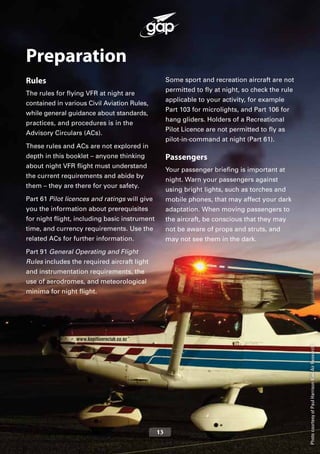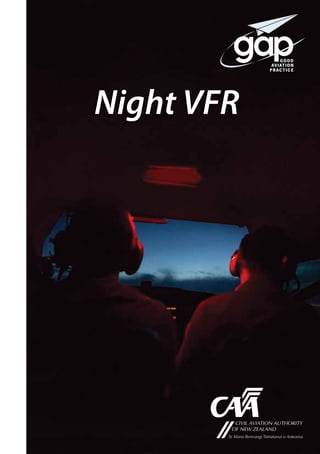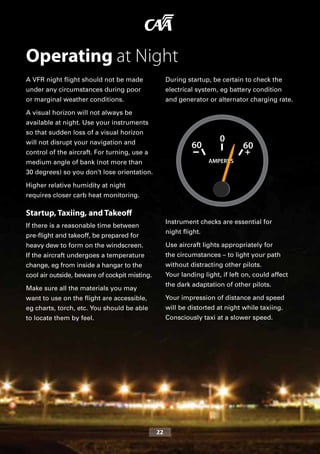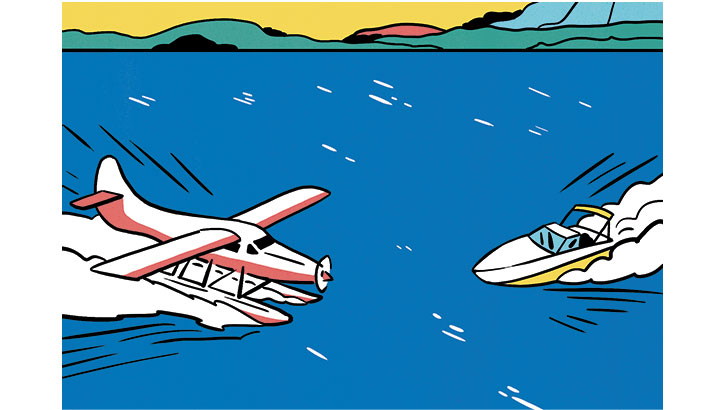Vfr Approaches to Land at Night Should Be Accomplished
The applicable exams are. How should VFR approaches to land at night be accomplished.
Special VFR SVFR FAA Order JO 711065 Para 2-1-4 Operational Priority.

. Wear sunglasses after sunset until ready for flight B. During daylight an object can be seen best by looking directly at it but at night a scanning procedure to permit off-center viewing of the object is more effective. When approaching to land on a runway served by a VSAI the pilot shall.
That weather at the airport located in Class D airspace is below basic VFR weather minimums. FAA-H-8083-3 a at a higher airspeed b with a steeper descent c the same as during daytime. Quick check the fuel supply for possible fuel exhaustion C.
Scan slowly to permit offcenter viewing. B - maintain an altitude at or above the glide slope. Another tactic for avoiding faulty approaches at night is to fly over the airport and enter a standard landing pattern.
What preparation should a pilot make to adapt the eyes for night flying. A standard 3-degree glidepath descends at 300 feet per nautical mile. Airport taxiway edge lights are identified at night by.
The same as during daytime. To cross directly over the airort at traffic pattern altitude and join downwind leg. A - maintain an altitude that captures the glide slope at least 2 miles downwind from the runway threshold.
PAR PGL PBG PBH PLA PRG PRH RPA RPG RPH PAT PGT PHT. The explanation should read. In addition the pilot should consciously practice moving the eyes more slowly than in daylight to optimize night vision.
Look to the side of the object and scan slowly. A Yes under VFR conditions only b Yes ADs are only voluntary c Yes if allowed by the AD 16 VFR approaches to land at night should be accomplished. The correct answer should be B.
Answer A is incorrect. Avoid red lights at least 30 minutes before the flight C. When executing an emergency approach to land in a single-engine airplane it is important to maintain a constant glide speed because variations in glide speed will answer choices A.
This allows you to clear any obstructing obstacles around the airport that may not be as visible at night. Private Pilot 66 questions. During a night flight you observe a steady red light and a flashing red light ahead and at the same altitude.
During operations outside controlled airspace at altitudes of more than 1200 feet AGL but less than 10000 feet MSL the minimum flight visibility for VFR flight at night is Definition 3 miles. Determine the wind direction to plan for the forced landing. Approaching at a higher airspeed could result in floating into unseen obstacles at the Gleim FAA Test Prep.
Only within the lateral boundaries of Class B. Peripheral vision by scanning small sectors and utilizing offcenter viewing. Immediately establish the proper gliding attitude and airspeed B.
Sitting in the cockpit during the cruise portion of any flight may have a tendency to become monotonous. 45 degree to the base leg just below traffic pattern altititude. 3123-1 The recommended entry position to an airport traffic pattern is.
At 3 miles about 900 AGL. The most important rule to remember in the event of a power failure after becoming airborne is to A. When executing an emergency approach to land in a single-engine airplane it is important to maintain a constant glide speed because variations in glide speed will answer choices increase the chances of shock cooling the engine.
Approach at night to an airport is safer with a steeper descent. C - remain on the glide slop and land between the two-light bar. A firm understanding of the proper aerial activity is essential for staying safe as you enter or depart the terminal area.
Increase the chances of shock cooling the engine. The three takeoffs and landing that are required to act as pilot in command at night must be done during the time period from 1 hour after sunset to 1 hour before sunrise to meet the recency of experience requirements to act as pilot in command carrying passengers at night a pilot must have made at least three takeoffs and three landings to a full stop within the preceding 90 days in. To enter 45 degree at the midpoint of the downwind leg at traffic pattern altitude.
To set the high intensity runway lights on medium intensity a pilot should click. 11314 VFR approaches to land at night should be accomplished at a higher airspeed. And on a 1-mile final 300 AGL.
The lack of light can play many illusions on a pilot and make himher think that they are higherlower fasterslower than they really are. VFR approaches to land at night should be accomplished. 14 CFR Part 91 does not prohibit SVFR helicopter operations.
The most important rule to remember in the event of a power failure after becoming airborne is to. While operating in class d airspace each pilot of an aircraft approaching to land on a runway served by a visual approach slope indicator vasi shall maintain a 3º glide until approximately 12 mile to the runway before going below the vasi maintain an altitude at or above the glide slope until a lower altitude is necessary for a safe landing stay high until the runway can be reached. But as the destination traffic pattern approaches workload can increase exponentially.
At any location not prohibited by 14 CFR Part 91 Appendix D or when an exemption to 14 CFR Part 91 has been granted and an associated LOA established. With a steeper descent. Additionally approaches and landings at night should be made in the same way as they are made during daylight using the same airspeeds altitudes and descent angles.
Avoid bright white lights at least 30 minutes before flight. In the same manner as they are during the day 9 A military air station can be identified by a rotating beacon that emits two quick white flashes between green flashes. On a 5-mile final you should be 1500 feet above ground level AGL.
10 Two quick white flashes between green flashes indicates what. VFR approaches to land at night should be accomplished A.
How Low Can You Go Your Guide To Minimum Vfr Altitudes Boldmethod
If Awos Reports Ifr Conditions When It S Clearly Vfr Can You Legally Fly Boldmethod

Pilot Approach And Landing Illusions Aviation Education Aviation Training Pilots Aviation

Class G Airspace Flight Lessons Flight Instruction Pilot Training





No comments for "Vfr Approaches to Land at Night Should Be Accomplished"
Post a Comment